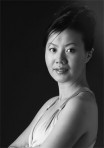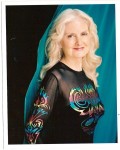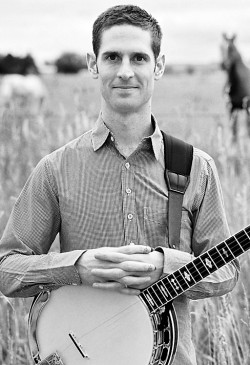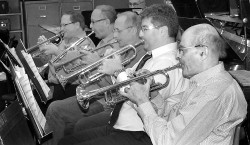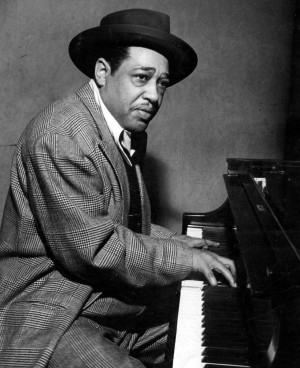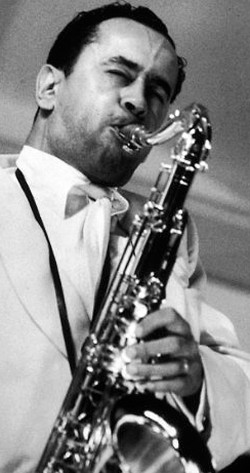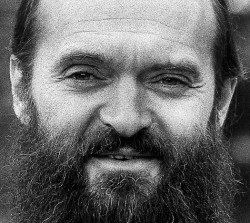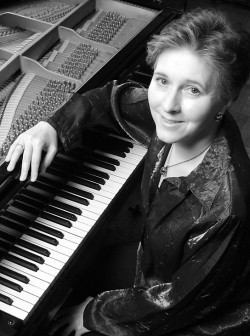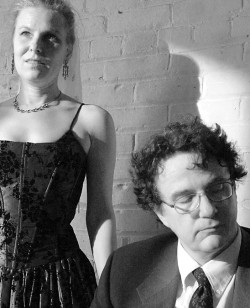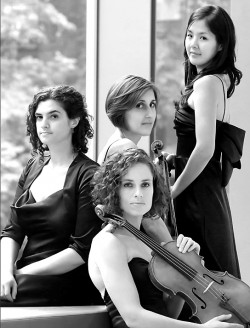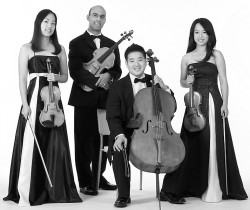Local Names Emerge
Emerging and early career composers are making their mark all over the November concert calendar. No less than half a dozen upcoming Toronto events feature fresh and fascinating works by new, international and increasingly noticeable local names – sometimes in showcase formats, but just as often tucked into more traditional programming.
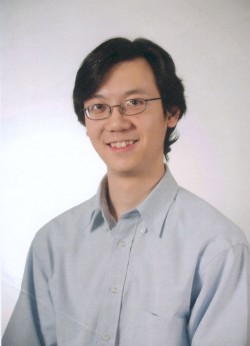 One of those more noticeable locals is composer Kevin Lau, who will have his symphonic work Artemis performed by the Sneak Peek Orchestra on November 6 at the Calvin Presbyterian Church. Lau is a remarkably prolific young composer, gifted with a strong control of his craft and an easily approachable musical voice. As a result, he already holds to his credit commissions and premieres from the likes of the Esprit Orchestra, the Toronto Symphony Youth Orchestra, the Toronto Philharmonia and the Cecilia String Quartet. He’s also co-founder with conductor Victor Cheng of Sneak Peek, one of Toronto’s fastest-rising symphonic ensembles, and one that specifically showcases the talents of this city’s emerging professionals.
One of those more noticeable locals is composer Kevin Lau, who will have his symphonic work Artemis performed by the Sneak Peek Orchestra on November 6 at the Calvin Presbyterian Church. Lau is a remarkably prolific young composer, gifted with a strong control of his craft and an easily approachable musical voice. As a result, he already holds to his credit commissions and premieres from the likes of the Esprit Orchestra, the Toronto Symphony Youth Orchestra, the Toronto Philharmonia and the Cecilia String Quartet. He’s also co-founder with conductor Victor Cheng of Sneak Peek, one of Toronto’s fastest-rising symphonic ensembles, and one that specifically showcases the talents of this city’s emerging professionals.
Lau describes Artemis as “a musical portrait of the Greek goddess in the manner of Holst’s The Planets, whose seven movements are based on the Greek deities’ Roman counterparts. The movement “Mars, the Bringer of War” was particularly influential in the conception of this piece. At the same time, I sought to emphasize qualities which I thought would befit a more feminine warrior: speed and swiftness, lightness, agility.” Artemis will sit alongside Glenn Buhr’s slow and spacious symphonic miniature Akasha, and more classical fare from Brahms and Berlioz. For more info visit www.sneakpeekorchestra.com.
The following afternoon marks the beginning of Alain Trudel’s appointment as the Hannaford Street Silver Band’s principal guest conductor. Oddly enough, the programme will include a brass band arrangement of Holst’s The Planets and a new work from another of our local emerging talent, composer Rob Teehan. We heard a lot about Teehan last month during his residency at the Colours of Music Festival in Barrie, where he had no less than three world premieres, including two for major choral and orchestral forces.
When I asked him about his latest work, titled Wildfire, he explained “It’s very fast, very rhythmic, aggressive, somewhat dark, and it will push the players to their limit. I think I wrote it because I spent the summer writing beautiful, slow music and I needed a change of pace. It was nice to get back to brass writing, since that’s my original background, as a tuba player.” This is Teehan’s second time working with Trudel. The first was for his orchestral work Dream of Flying, which was premiered and recorded by the National Youth Orchestra of Canada, and subsequently nominated for a 2010 Juno. For more info about the concert and to get tickets, visit
www.hssb.ca.
 On November 10 and 11, the Toronto Symphony Orchestra brings back the distinctive voice of early-career composer Krystof Maratka. We first heard of Maratka in 2004 with the world premiere of his Otisk, a TSO commission that came only two years after this Czech-born, Paris-based composer started making a significant mark in Europe. Now 38 years old – still an early age in any composer’s creative development cycle – Maratka has amassed commissions, premieres and residencies with some of the world’s leading cultural institutions, not to mention two CDs dedicated to his music. He returns to Toronto with his 2002 viola concerto Astrophonia, which has been described as a “poetic voyage on the origins of the cosmos.” The two-movement work is dedicated to his wife, violist Karine Lethiec, whose strong interest in the alliance between music and the universe has clearly inspired the concerto’s theme. At 23 minutes in length, it’s a substantial work around which Peter Oundjian has built this Slavic Celebration concert, including works by Tchaikovsky, Prokofiev and Janáček. For more details and to purchase tickets, visit www.tso.ca.
On November 10 and 11, the Toronto Symphony Orchestra brings back the distinctive voice of early-career composer Krystof Maratka. We first heard of Maratka in 2004 with the world premiere of his Otisk, a TSO commission that came only two years after this Czech-born, Paris-based composer started making a significant mark in Europe. Now 38 years old – still an early age in any composer’s creative development cycle – Maratka has amassed commissions, premieres and residencies with some of the world’s leading cultural institutions, not to mention two CDs dedicated to his music. He returns to Toronto with his 2002 viola concerto Astrophonia, which has been described as a “poetic voyage on the origins of the cosmos.” The two-movement work is dedicated to his wife, violist Karine Lethiec, whose strong interest in the alliance between music and the universe has clearly inspired the concerto’s theme. At 23 minutes in length, it’s a substantial work around which Peter Oundjian has built this Slavic Celebration concert, including works by Tchaikovsky, Prokofiev and Janáček. For more details and to purchase tickets, visit www.tso.ca.
The centerpiece of this month’s emerging composer theme falls on November 14, when New Music Concerts plays host to Ensemble contemporain de Montréal +, and their biennial “Generation” tour. Building on its mandate to encourage and support musical creativity, ECM+’s project offers a unique and extensive professional development platform for composers under the age of 35. Since 1994, it has been discovering and nurturing the next generation of Canadian music creators, most of whom go on to make significant marks on the national and international music scene. The only project of its kind in Canada, Generation encourages musical research through live experimentation. Over the course of two years, four carefully selected young composers explore their musical voices by developing new works in collaboration with the ECM+ ensemble and their remarkable director Véronique Lacroix. The results are then presented in a cross-Canada tour, which – in addition to creating major exposure – builds new professional networks for these emerging talents.
The 2010 Generation composers are Simon Martin (Montreal), Christopher Mayo (Toronto/London, UK), Cassandra Miller (Victoria) and Gordon Williamson (Toronto/Bloomington, Indiana). Despite their young age, all of them are Associate Composers of the Canadian Music Centre, and many carry a cache of international experience and high-level accolades. For example, Gordon Williamson was a finalist in the CBC’s recent “Evolution” Young Composers Competition and Simon Martin has been a finalist in the prestigious Jules Léger Prize for Chamber Music. Chris Mayo and Cassandra Miller both already have international careers, most notably in the UK and the Netherlands respectively. Consequently, the Generation tour is a rare chance to hear some of the absolute best up-and-coming Canadian voices. For more info about the Generation program visit www.ecm.qc.ca. To purchase tickets for the November 14 concert at the Music Gallery visit www.musicgallery.org.
 But the discovery of new musical voices doesn’t stop there. Both York University and the University of Toronto showcase new music by their student composers on November 16 and 30 respectively. On November 18, 32-year-old Polish-American (and now Canadian) composer Norbert Palej – a recent addition to the U of T faculty – joins clarinetist Peter Stoll on stage at Walter Hall in a free lunchtime concert of his works for clarinet. That same evening, the Gryphon Trio performs selections from their Young Composers Program alongside core repertoire by Ives, Beethoven and Dvorak for the Music Toronto series. So be sure to get in with the new via The WholeNote’s concert listings here.
But the discovery of new musical voices doesn’t stop there. Both York University and the University of Toronto showcase new music by their student composers on November 16 and 30 respectively. On November 18, 32-year-old Polish-American (and now Canadian) composer Norbert Palej – a recent addition to the U of T faculty – joins clarinetist Peter Stoll on stage at Walter Hall in a free lunchtime concert of his works for clarinet. That same evening, the Gryphon Trio performs selections from their Young Composers Program alongside core repertoire by Ives, Beethoven and Dvorak for the Music Toronto series. So be sure to get in with the new via The WholeNote’s concert listings here.
Jason van Eyk is the Ontario Regional Director of the Canadian Music Centre. He can be contacted at newmusic@thewholenote.com.


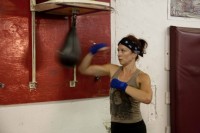
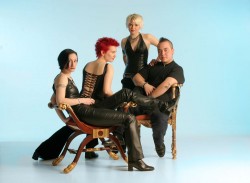
 Anyone who’s been to a Toronto Consort performance knows Laura Pudwell – her marvellously flexible, clear and expressive mezzo voice has long been a feature in their concerts and in performances (from early music to contemporary) in Southern Ontario and internationally. With some friends of hers (Julie Baumgartel, baroque violin, Margaret Gay, baroque cello and Lucas Harris, archlute), she’ll be presenting “Laura Pudwell and Friends.” This performance is a presentation of Classics at the Registry, and it takes place in Kitchener on November 14.
Anyone who’s been to a Toronto Consort performance knows Laura Pudwell – her marvellously flexible, clear and expressive mezzo voice has long been a feature in their concerts and in performances (from early music to contemporary) in Southern Ontario and internationally. With some friends of hers (Julie Baumgartel, baroque violin, Margaret Gay, baroque cello and Lucas Harris, archlute), she’ll be presenting “Laura Pudwell and Friends.” This performance is a presentation of Classics at the Registry, and it takes place in Kitchener on November 14.
